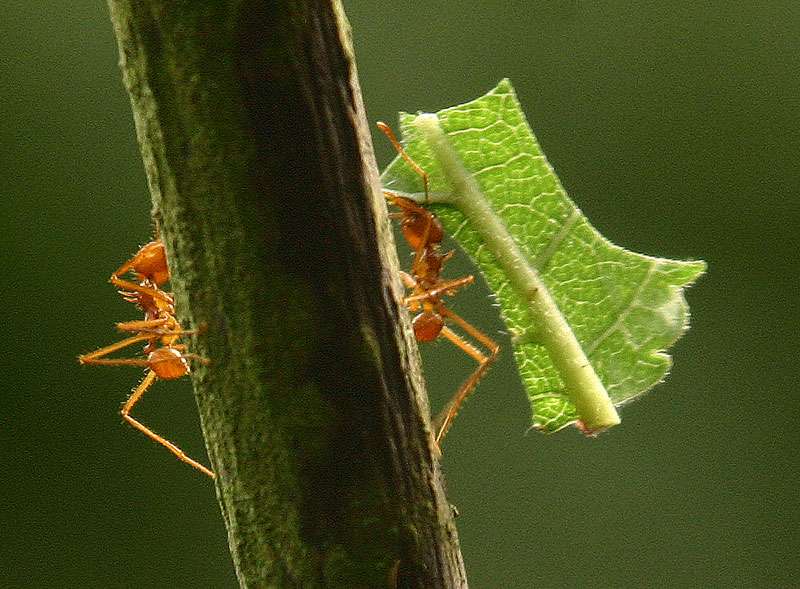April 29, 2015 report
Study sheds light on how leafcutter ants use chemical secretions to prevent fungal infections

(Phys.org)—A team of researchers working in Panama has learned more about how leafcutter ants use chemical secretions to ward of fungal infections. In their paper published in Proceedings of the Royal Society B, the team, made up of researchers from Panama and Denmark, describe how they set up multiple ant colonies and subjected them to various fungal infections, and watched how the ants warded them off.
Organisms that live in large colonies are subjected to threats from a variety of diseases; bacterial, viral and fungal. Humans have countered such threats in modern times through the use of antibiotics, an approach also used by other organisms—most ant species, for example, have over time learned how to harvest bacteria that is able to kill the types of fungi that can wreak havoc on a colony. In stark contrast, leafcutter ants have developed a different approach—they have glands on their bodies that secrete phenylacetic acid, which they apply to infected areas in a colony, killing the invader. But as, the researchers note, little is known about how the ants have managed to avoid the fungus developing immunity to the acid over the course of the millions of years that the ants have been producing it. Figuring that out might help us humans improve our own methods.
To learn more, the team collected several leafcutter ants from sites around Panama and used them to create five individual colonies, (over the years 2004 to 2010) which were subdivided into four sub-colonies each. Colony sizes were allowed to grow to different sizes to see how fungal fighting efforts changed over time. The team also subjected the sub-colonies to various doses of the type of fungus that would typically cause a problem for the ants, and then watched closely as the ants defeated every single one of them.
As it turns out, as a colony develops, a unique type of worker ant begins to appear, one with an enlarged metapleural gland, which secretes the phenylacetic acid—this worker ants' sole purpose appears to be eradicating fungal infections.
The team acknowledges that their study did not shed much light on how the insects have managed to keep their antifungal agent working for so long, but suggest that it might have something to do with the way the ants apply their chemical—only when there is an infection and only on infected areas.
More information: Functional role of phenylacetic acid from metapleural gland secretions in controlling fungal pathogens in evolutionarily derived leaf-cutting ants, Proceedings of the Royal Society B, Published 29 April 2015. DOI: 10.1098/rspb.2015.0212
Abstract
Fungus-farming ant colonies vary four to five orders of magnitude in size. They employ compounds from actinomycete bacteria and exocrine glands as antimicrobial agents. Atta colonies have millions of ants and are particularly relevant for understanding hygienic strategies as they have abandoned their ancestors' prime dependence on antibiotic-based biological control in favour of using metapleural gland (MG) chemical secretions. Atta MGs are unique in synthesizing large quantities of phenylacetic acid (PAA), a known but little investigated antimicrobial agent. We show that particularly the smallest workers greatly reduce germination rates of Escovopsis and Metarhizium spores after actively applying PAA to experimental infection targets in garden fragments and transferring the spores to the ants' infrabuccal cavities. In vitro assays further indicated that Escovopsis strains isolated from evolutionarily derived leaf-cutting ants are less sensitive to PAA than strains from phylogenetically more basal fungus-farming ants, consistent with the dynamics of an evolutionary arms race between virulence and control for Escovopsis, but not Metarhizium. Atta ants form larger colonies with more extreme caste differentiation relative to other attines, in societies characterized by an almost complete absence of reproductive conflicts. We hypothesize that these changes are associated with unique evolutionary innovations in chemical pest management that appear robust against selection pressure for resistance by specialized mycopathogens.
Journal information: Proceedings of the Royal Society B
© 2015 Phys.org



















